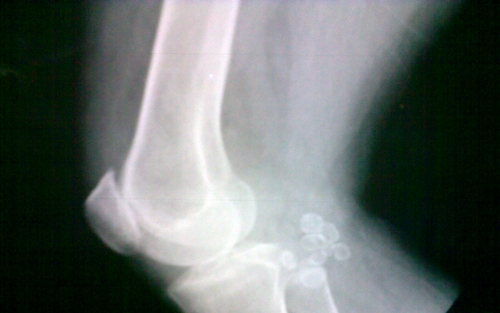5 January 2015. Results from a clinical trial show a device emitting electronic pulses reduced more pain in the knees of people with osteoarthritis, compared to a placebo. Findings from the study, conducted by a team from University of Messina in Italy, appear in the January 2016 issue of the journal Rheumatology.
The trial tested the ActiPatch device made by BioElectronics Corporation in Frederick, Maryland, as a treatment for pain caused by for osteoarthritis in the knee. Osteoarthritis is the most common form of arthritis, where cartilage that cushions the joints breaks down, causing bones to rub together resulting in stiffness and pain, affecting some 27 million Americans according to Centers for Disease Control and Prevention. Symptoms often appear gradually and become worse with age, but are aggravated by overuse, obesity, previous injuries, and in some cases genetics. Treatments for osteoarthritis usually aim at relieving pain, since no cure is yet found.
BioElectronics Corp. is a developer of devices for humans and pets that emit radio-frequency, or RF, waves and interact with tissue to decrease inflammation and sensitization to pain. The company’s devices, such as ActiPatch, adopt stochastic resonance, a principle from physics where adding random noise to a signal in the right way and right time can improve the detection of that signal. In this case, says the company, the amplified signals stimulate afferent nerves that carry impulses to the central nervous system, increasing non-painful sensory traffic to the brain and decreasing perceptions of pain from the affected area.
In the clinical trial, 60 individuals with osteoarthritis in the knee were randomly assigned to wear a knee wrap either with the ActiPatch or a placebo device that did not emit RF waves. Participants wore the wraps for 12 hours a day over one month. The study team looked primarily at changes in scores on a standard visual analog scale for pain intensity, and the Western Ontario and McMaster Universities Osteoarthritis Index, or Womac, that assesses pain, stiffness, and physical function in people with osteoarthritis.
After one month, participants receiving electronic stimulation to their knees experienced less pain and stiffness, according to the rating scales, than the individuals not receiving electronic stimulation. Also, about a quarter (26%) of participants wearing the ActiPatch were able to completely stop taking medications, such as analgesics, for their pain. The authors say no adverse effects were reported from the treatments.
In August 2015, BioElectronics Corp. reported findings from 5,000 ActiPatch users in the U.K., where 65 percent of participants said they experienced reduced knee pain. A follow-up survey three months later showed users of the device were taking fewer pain medications and reporting a better quality of life.
Read more:
- University Spin-Off Develops Pain Killer Patch
- Novartis Acquires Pain Medication Developer in $200M Deal
- Mobile App Data Provided for Chronic Pain Study
- Fewer Americans on Pain Meds, But in Risky Combinations
- FDA Approves Low-Dose Anti-Inflammatory for Arthritis Pain
* * *


 RSS - Posts
RSS - Posts
You must be logged in to post a comment.